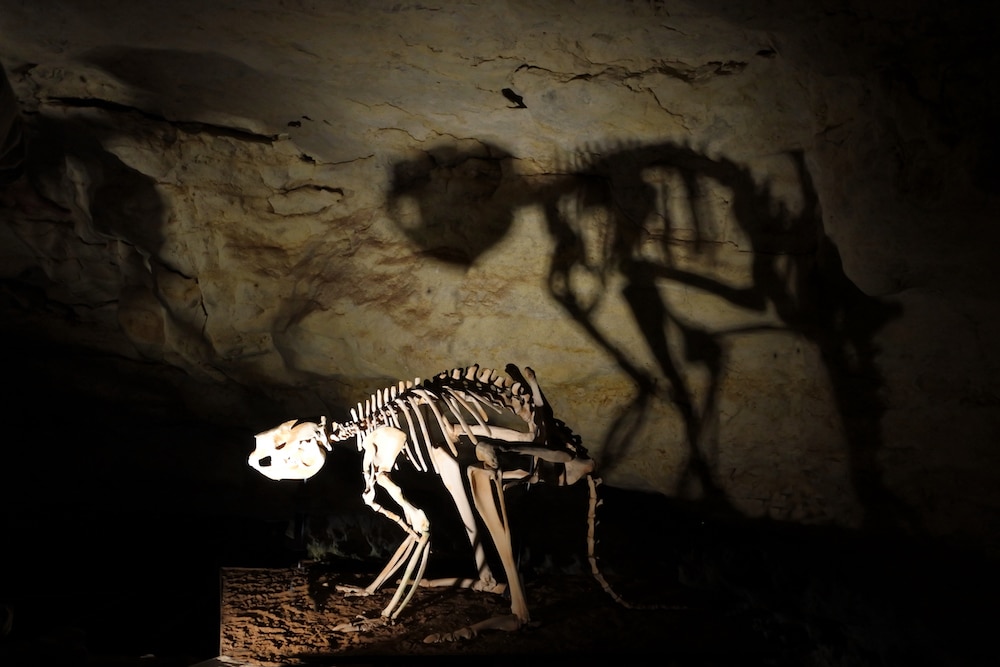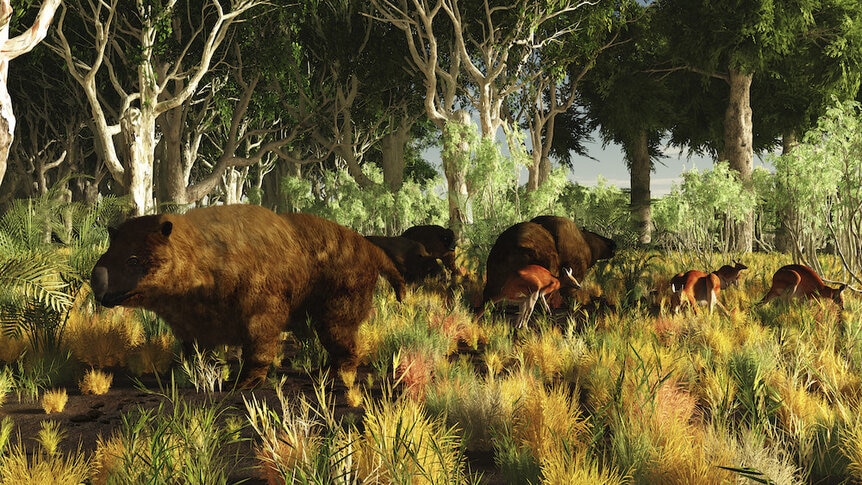Create a free profile to get unlimited access to exclusive videos, sweepstakes, and more!
Prehistoric Hunger Games happened between monstrous Ice Age creatures
Mega-herbivores might have looked monstrous, but if the plants they ate vanished, so did they.

Imagine struggling to survive in an arena where you’re constantly being hunted, where the only way out is likely death — and you’re a Diprotodon.
Megafauna that lived in Australia during the Late Pleistocene era only looked monstrous. The grim reality was that many of these creatures were actually huge herbivores whose food supply vanished, or were hunted by humans and predators. Diprotodon optimum (which basically looked like a giant wombat) was only one of these now-extinct creatures. If you were going to keep eating and stay alive, it often depended on whether or not your dinner would.
Evolutionary ecologist John Llewelyn of Flinders University, who led a study recently published in Ecography, found out that many species of herbivorous megafauna went down with the extinction of certain plant species that they depended on. The lower on the food chain you were, the more peril you were in, even if your size made your appear imposing. Some changes in the environment were lethal to certain plants. Anything that relied on only a few types of plants was threatened the most.
“Herbivores were most vulnerable, with vulnerability decreasing with trophic level, so the giant herbivorous marsupials were especially vulnerable,” Llewelyn told SYFY WIRE. “These guys all got to over 400 pounds and are unlike anything surviving today.”
Diprotodon optatum was just one of the species that probably met its end from starvation. Procoptodon goliah (the short-faced kangaroo), Palorchestes azael (which somewhat resembled a tapir), and Zygomaturus trilobus (another wombat-like thing) were all among the herbivores that ended up being wiped out. Fossils in the Naracoorte Caves area are all that is left of them. Llewelyn and his team used computer models and simulations to get an idea of what most likely happened in the region about 40,000 years ago for there to be such massive casualties.
To rewind time, the researchers identified which megafauna once roamed Naracoorte, whether they died out, or made it and are still around. Who probably ate what — and whom — back then was determined by observations of the interactions that extant species have with their environment and each other. These interactions could be direct or indirect. That gave them what they needed to create a trophic model of the ecosystem towards the Late Pleistocene. Trophic models are based on increases and decreases in herbivorous or carnivorous species.
“This study showed that the extinct megafauna were sensitive to changes in the plant community,” Llewelyn said. “The next step is to test whether substantial changes in the plant community happened at the time of the extinctions, and whether they were driven by climate change or humans.”
While anthropogenic climate change is now heavily concerning, there is no way to prevent climate change that suddenly comes out of nowhere, a phenomenon that has brought entire human civilizations crashing down in the past. Evidence for exactly what type of shift may have occurred in the climate has not been unearthed yet. Since this was the end of the Ice Age, it is possible that either plants which had adapted to the cold could no longer survive with rising temperatures, or vice versa. Humans had also learned to use the land for their own purposes. Hunting and firestick farming, which involved burning vegetation, might have had an effect.
Megafaunal extinctions in the past could tell us what might happen in the future. Phenomena that struck tens of thousands of years ago could always reappear. Llewellyn thinks ancient extinctions can also reveal why the species that were wandering around then are still around today, and how they have made it this far and obviously taken Haymitch Abernathy’s advice in The Hunger Games: to “stay alive.”
“If the methods accurately model past processes for which we know the outcome (from the fossil record), we can have more confidence in their ability to model these processes for future predictions,” he said.
Unfortunately for the predecessors of wombats and koalas and kangaroos, they can only live on as skeletons.



























